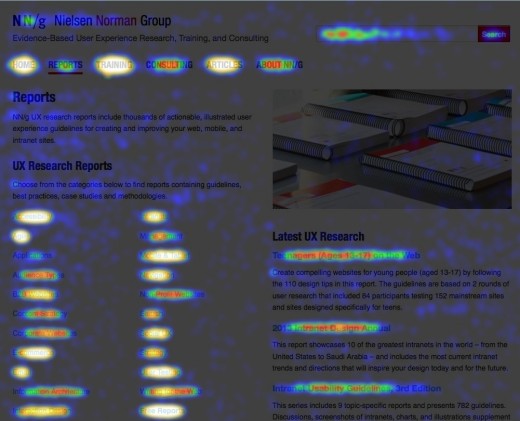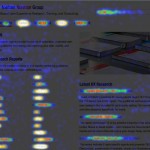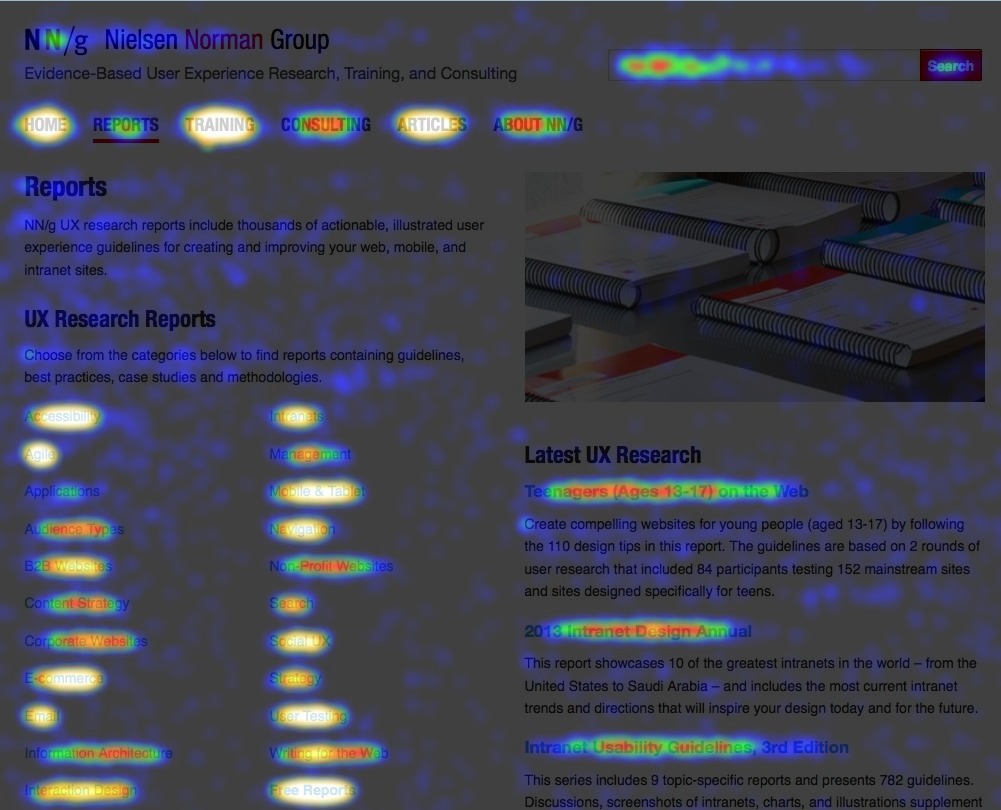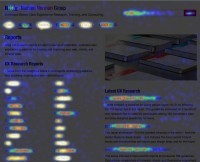What Are heat Maps just right For (in addition to having a look Cool)?
December sixteen, 2015
heat maps are a popular conversion optimization device, but what just right are they in point of fact?
It’s simple to say that they help you to peer what customers are doing for your web site. certain, after all – but lots of different strategies try this too, and in all probability with greater accuracy.
So how are heat maps helpful within the pursuit of higher conversion rates?
what is a heat Map?
warmth maps are visual representations of information. They have been developed by way of Cormac Kinney in the mid-ninety’s to try to permit traders to beat financial markets. basically, they permit us to record what people do with their mouse or trackpad and quantify it, after which they show it in a technique that’s visually interesting.
heat maps is a broader class that may embrace:
- Hover maps (mouse motion monitoring)
- click on maps
- Scroll maps
For any of the above warmth map sorts, to be able to make accurate inference on the data to be had you will have to have enough pattern size per web page/reveal sooner than you act on outcomes. A just right rule of thumb is 2000-3000 pageviews per design screen, and likewise per tool (i.e. take a look at cellular and pc one after the other). If the warmth map is based off like 50 customers, do not trust any of it.
considering there are just a few various kinds of “heat maps,” let’s go over each and decide what value it bargains.
Hover Maps (Mouse motion monitoring)
When folks say ‘heat map’, they steadily mean hover map. It displays you areas the place people have hovered over with their mouse cursor. the speculation is that folks appear the place they hover and as a consequence it presentations how users learn an internet web page.
Hover maps are modeled off of a classical usability trying out technique: eye tracking. whereas eye tracking is useful in understanding how a person navigates a website online, mouse tracking tends to fall brief as a result of some stretched inferences.
The accuracy of mouse cursor tracking is all the time questionable. folks might be looking at stuff that they don’t hover over. They may also be hovering over issues that gets little or no attention – due to this fact the heatmap could be inaccurate. maybe it’s accurate, perhaps it’s no longer. How are you aware? You don’t.
In 2010, Dr Anne Aula, Senior user expertise Researcher at Google, gave a presentation the place she introduced some disappointing findings about mouse tracking:
- only 6% of individuals confirmed some vertical correlation between mouse movement and eye monitoring
- 19% of people confirmed some horizontal correlation between mouse movement and eye tracking
- 10% hovered over a hyperlink after which persisted to read around the page having a look at other things.
We in most cases ignore most of these heatmaps. despite the fact that you do look at it to see if it helps your beliefs/suspicions, don’t put too much stock in it. man Redwood at easy Usability has a identical belief about mouse tracking:
“We’ve been working eye tracking research for over 5 years now and can in truth say, from a person expertise analysis point of view, there’s no helpful correlation between eye movements and mouse movements – except for the apparent taking a look at the place you are about to click.
If there used to be a correlation, shall we immediately stop spending cash on eye tracking tools and simply use our mouse tracking information from web sites and usefulness classes.”
hence why Peep calls these maps “a negative man’s eye monitoring tool.”
because there isn’t often a number of overlap between what these maps show and what customers are doing, it’s difficult to deduce any precise insights. You’ll turn out telling more tales to provide an explanation for the photographs than exact truths. even supposing this blog submit is talking about soccer heat maps, they put it neatly:
“What do warmth maps do? they give a obscure affect of where a participant went right through the healthy. well, i can get a obscure impression of where a participant went all over a suit by observing the sport excessive of a newspaper.”
whereas some studies have indicated better correlations between precise gaze position and cursor place, you need to ask your self if the that you can think of insights are definitely worth the risk of deceptive information and the increasing chance of confirmation bias in prognosis.
What about algorithm generated heatmaps?
similarly, there are heatmaps instruments that use an algorithm to analyze your person interface and generate a visual in keeping with that. They consider plenty of attributes: colours, contrast, visible hierarchy, measurement, and many others. Are they trustworthy? maybe. here’s how a piece of writing on air of mystery.org put it:
“visible consideration algorithms, where pc instrument ‘calculates’ the visibility of the different parts throughout the image, are regularly bought as a more cost-effective alternative. however the identical study with the aid of PRS, confirmed that the algorithms aren’t sensitive sufficient to notice differences between designs, and are particularly negative at predicting the visibility levels of on-percent claims and messaging.”
(fast observe: PRS, the other of the study stated above, sells eye monitoring analysis services and products.)
whilst you shouldn’t fully location your trust in algorithmically generated maps, they’re now not any less devoted than your hover maps.
and especially when you have decrease site visitors, algorithmic instruments can give you some form of visible knowledge for usability analysis. it may well provide you with immediate results, which is cool. Some tools to take a look at:
be mindful, simply because it’s immediate doesn’t mean it’s magic. It’s a picture in keeping with an algorithm and not in keeping with your precise customers’ habits.
click Maps
click on maps convey you a heatmap made from aggregated click data. Blue is much less clicks, and when it will get in opposition to the warmer reds there are extra clicks, and probably the most clicks are the brightest white and yellow spots.
this is beautiful cool to take a look at, and to be clear, there’s quite a lot of communicative value in these maps. They help explain across teams the significance of optimization and what’s and isn’t working. received an enormous photograph that takes up numerous the web page that loads of people click on on but isn’t a link? perhaps make it a hyperlink or something.
factor is, you could also see where folks click with Google Analytics – which is usually best. if you have greater hyperlink attribution turned on and arrange, Google Analytics overlay is superb (however some folks desire to peer it on a click map form of visible).
And in the event you go to behavior → website online content material → All pages, and click on on an URL, which you could open up Navigation summary for any URL – where people came from, and the place they went after. highly helpful stuff.
With click maps, as i mentioned prior to, there’s one useful bit – you can see when folks click on issues that aren’t links.
for those who uncover one thing (a picture, sentence, or no matter) that people want to click on, however isn’t a hyperlink, then either:
- Make it into a link
- Don’t make it appear to be a hyperlink.
It’s additionally straightforward to speedy take within the combination click knowledge and spot extensive trends. cautious, although, to not succumb to handy storytelling in this case.
consideration maps
An consideration map is a heat map that shows you which of them areas of the page are seen essentially the most by means of the consumer’s browser with full consideration of the horizontal and vertical scrolling process.
They convey which areas of the page had been considered the most, bearing in mind how a long way they scroll, and the way long they spend on the web page.
Peep considers this to be a long way extra helpful than the opposite mouse motion or click heatmaps. Why? because you can find if key pieces of data – both text and visuals – are within the house that’s visible to virtually all customers. This makes it more straightforward to design pages with the person in thoughts. right here’s how Peep put it:
 Peep Laja:
Peep Laja:
“What makes this handy is that it takes account completely different screen sizes and resolutions, and shows which part of the web page has been seen probably the most throughout the person’s browser. understanding consideration will let you examine the effectiveness of the web page design, particularly above the fold house.”
Scroll Maps
Scroll maps are heat maps that show you how far people scroll down on a page. They’re fascinating in that they show you the place customers tend to drop off, and can be very helpful.
whereas we can use scroll maps for really any size of page, there’s an especially pertinent use case for them in designing lengthy-form gross sales pages and longer touchdown pages.
normally, the longer the page, the less individuals will make it the entire manner down. that is normal and helps you prioritize content material – what’s should have and what’s simply nice-to-have? Prioritize what you need people to concentrate to and put it up larger.
Scroll maps can also let you tweak your design. in case you’ve bought strong colour changes, that implies that people think no matter follows is now not related to what got here earlier than (known as “logical ends.”). These are sharp drop-off factors which can be onerous to look with simply Google Analytics.
On longer landing pages, this would possibly imply including navigation cues and higher visible cues the place the scrolling job stops. keep individuals moving down the web page, like does:
user session replays
This isn’t in point of fact a ‘warmth map’ per se, but is the most valuable bit in most instruments that provide heat maps.
Use session replays permit you to file video sessions of people going via your web site. It’s more or less like consumer checking out, but has no script and no audio. however people are risking with their precise cash – so it can be extra insightful.
this is extra qualitative data. You’re trying to notice bottlenecks and value issues. where are folks no longer in a position to complete actions? the place do they offer up?.
one of the crucial highest use circumstances for session replays is looking at how individuals fill out kinds. though it’s good to configure experience tracking for Google Analytics, it wouldn’t present the level of insight as user session replays. also, you probably have a web page that is performing badly, and you don’t understand why, then that you can watch user session replays to determine that you can imagine issues. which you can also see how fast they read, scroll down the page, and many others.
examining them is, after all, well timed. We spend like 1/2 a day observing videos for a new shopper website online.
What’s mistaken With heat Maps
heat maps can be tricky for a similar cause as that outdated metaphor in regards to the drunkard and the sunshine post. folks use it for make stronger instead of illumination.
In different words, ignoring one of the crucial data inaccuracies discussed above with certain maps, it opens you as much as an international of possible bias, especially if it is a primary piece of your conversion analysis. Andrew Anderson, head of optimization at Malwarebytes, put it very smartly:
 Andrew Anderson:
Andrew Anderson:
Nothing presentations a lack of know-how of fee and price greater than people getting overly caught up with where folks click on.
is kind of folks clicking on something just right or bad? Is the most clicked factor the most important? essentially the most influential? what is going to occur if twice as many people click on on this one factor? Does one thing should be clicked on loads to have influence? Does it must be clicked on at all? heat maps finally provide a thousand extra questions with out the ability to respond to a single one in a significant method.
What we know is that most people will use their bias to decide the value of things and use that to filter all of the incoming knowledge. they’ll confuse the most active for essentially the most valuable. they are going to default to a linear rate version, which is the least representative form of adaptation. they are going to try to get extra people to a step or an merchandise on the web page with none real insight into the relative price or effectivity of that modify. Even worse they are going to use a warmth map or any click primarily based metric so that you could continue their story telling and to continue to confuse what they hope will happen with what’s the highest for the website or web page.
warmth maps can be useful at a excessive stage and so that you could be in contact areas of difficulty to people much less analytically savvy in the group.
they may be able to even be a just right start line for conversion analysis and prognosis.
but nearly all the perception they bring may also be gleaned from completely different analytics instruments – and Google Analytics tends to offer much less wiggle room for interpretation, storytelling and bias.
In other phrases, warmth maps are great instruments within the optimizer’s arsenal, but should not be the tip-all be-enthusiastic about figuring out challenge and check planning.
Conclusion
warmth maps are pretty cool taking a look. now not most effective that, they provide tremendous value (if used proper):
- Algorithmic heat maps can give low site visitors websites and idea of how individuals use their website online.
- click on maps may give high degree visuals on the place persons are clicking and where they aren’t.
- consideration maps allow you to see which elements of the websites are most visible to all customers, throughout all browsers and gadgets. They permit you to decide where to put your value prop and different important parts.
- Scroll maps help you design longer touchdown pages and maintain individuals moving down the page (helps with prioritizing content as well).
- user session replays are irreplaceable instruments in your arsenal.
however you will have to never solely depend on heat maps for conversion research. the consequences will also be limiting at easiest and misleading at worst, leading to compounding hobby of bias and illusory insights.
Digital & Social Articles on trade 2 neighborhood
(60)








